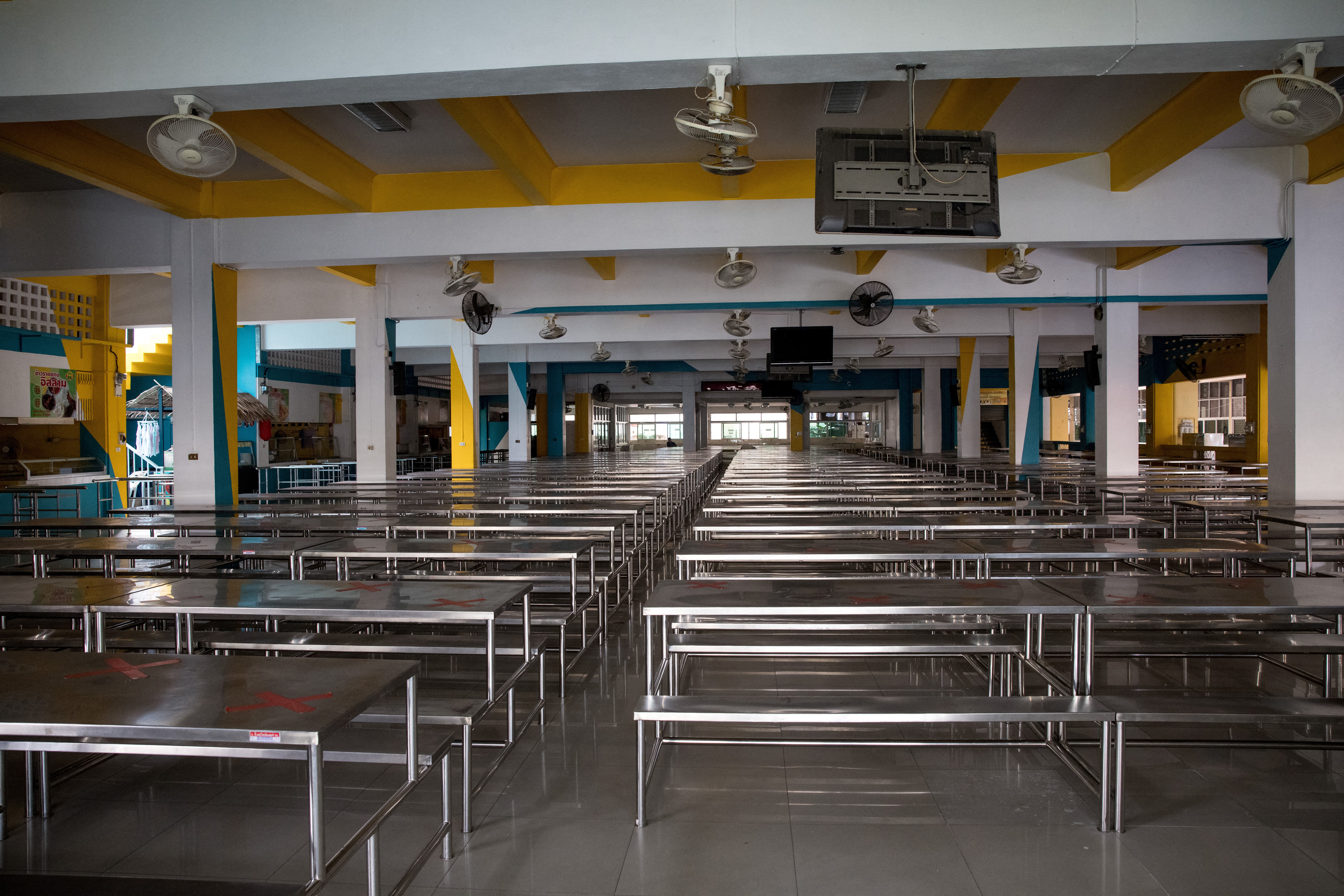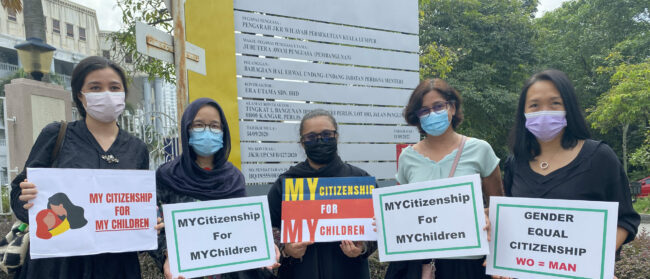At a protest earlier this month, a large banner was unfurled on the side of an overpass that read, “1.8 million children are about to fall out of the school system due to online instruction that doesn’t give a shit about them.” A young girl also hung herself over the side, a mock public suicide. The protest by the pro-democracy youth group Bad Student was a part of a six-day “online school strike.”
The catalyst for the student strike is the combination of the government’s gross incompetence in slowing the spread of the coronavirus pandemic and the prolonged closure of educational institutions throughout Thailand. As a result, millions of Thai students have had no other option but to continue their studies online. Unfortunately for many, the lack of government preparedness for a major disruption to primary and secondary education, the financial strain caused by the pandemic, extreme levels of income inequality and high levels of household debt have created a dilemma for Thai students that is often well beyond their ability to control.
Bam, a 20-year-old political science student at Thammasat University, got involved in the Bad Student group because of her concern for common student issues in Thailand, like violence, rampant inequality and an authoritarian school system that carefully governs student conduct and creates a climate of fear and anxiety among students.

“I think these are problems that cannot be ignored and we must not pass these problems on to other generations,” she said. “We are always told to respect and obey authority without asking questions. We are taught to conform to a system that never supports us or listens to our voices.”
Teachers follow me on my social media and revile me every time I go to protest
According to Human Rights Watch, the COVID-19 pandemic has impacted as many as 1.4 billion students globally in more than 190 countries, shutting them out of their primary and secondary school classrooms. As waves of the pandemic hit certain countries disproportionately, schools have either opted to close entirely, resorted to online teaching or reopened for in-person teaching—regardless whether or not school systems are adequately prepared for the pandemic or the unexpected stresses of online learning.
The most common complaint among Thai students is the amount of homework given to middle school and high school students, as well as the number of hours that students are expected to sit in front of their computers—as much as eight hours per day.
The result for 16-year-old Naam (name changed to protect a minor child) was arduous.
“I have to just stay in my room every day. I don’t have time to think about anything else but despair. I can’t do the things I love, like meeting friends,” Naam said. “Every day, I just do homework, homework, homework, study, study, study. It made me have a mental health breakdown.”
Naam dropped out of school for three months after her breakdown. She said her political activism with the Bad Student group also made her a target of school authorities.
“They kept an eye on me and always deducted [points] every time I did not follow the school rules,” she said. “Teachers follow me on my social media and revile me every time I go to protest.”
She’s now being homeschooled.
Thailand’s approach to online learning was tested and roundly criticized early. In May 2020, the government began the implementation of state distance learning television (DLTV) and online classrooms, but persistent inequality got in the way. During the initial broadcast, many homes did not have adequate internet connections or enough televisions or devices for multiple children.
According to the Thailand Development Research Institute (TDRI), poor internet connectivity is a challenge for many households. Only 21% of Thai homes have computers, which is lower than the 49% global average. While internet access in some Thai households isn’t a problem, securing the number of devices needed to adequately prepare for online learning is.
The World Bank warned in January that the Thai education system was fatigued and ill-prepared to implement online learning. A survey revealed the layers of inequality between urban and rural children, with many lacking the equipment needed to participate in remote, online education. School resources are often limited, with larger schools much better equipped than their smaller counterparts.
Not long ago, analysts had forecast the online education market as a $350 billion industry by 2025. The pandemic has now eviscerated old ideas about the unique advantages of technology in education. Instead, the reality of the toll on mental health, for example, dictates that everything—including technological innovation—must be done in moderation. While it has forced schools into remote learning, more than 18 months into long periods of government mandated lockdowns have quieted those advocating remote education as a replacement for the traditional classroom.
Many people can’t afford a good education or any education at all
In Thailand, the traditional curriculum, often an old-fashioned rote approach to learning, is unwelcoming to technology. Teachers are largely untrained or lack the capacity to adapt to changes COVID-19 and the Ministry of Education has forced upon them.
Nok (name changed to protect a minor), an eighth grade student from Bangkok, said educational inequality is a key factor affecting many Thai students.
“Many people can’t afford a good education or any education at all, and because of the pandemic we are forced to study online,” she said. “It is impossible to study online without an electronic device and it is barely possible to use your phone instead of an iPad or a computer.”
She noted that many Thai families struggle to support their children’s education.
In an editorial published in JAMA Network Open, a medical journal published by the American Medical Association, two pediatricians pondered the debate over reopening schools as students fall behind or suffer the mental health effects of social isolation. Dr. Danielle Dooley from Children’s National Hospital in Washington, D.C., and Dr. Dimitri Christakis of Seattle Children’s Research Institute noted that at every stage of the pandemic, school reopening “has been an afterthought and not a priority.”
American investment in education is at a crossroads, but Dooley and Christakis call for large investments in school-based health services, including mental health, district-wide reopening plans, shortened quarantines after exposure to minimize lost learning time and adequate training of school workers to address issues of cognitive decline and individual trauma. In an ideal environment, these recommendations would likely cut the amount of time needed to safely return students to the classroom, while not downplaying the need for strict protocols.
The disparities in Thai education may make this advice seem unreasonable. While Thailand spends roughly 5% of its GDP on education, just slightly above the Organisation for Economic Co-operation and Development (OECD) average, the investment has not translated into progress. The Ministry of Education says Thailand spent more than 493 billion baht on education in 2020, from primary through higher education. That figure will be reduced for the next fiscal year starting in October as Thailand shifts spending priorities to combatting COVID-19 and stimulating economic growth.
However, the editorial by Dooley and Christakis provides an alternative and some insight into where Thailand should put its education funding. In addition to promoting equality in Thai schools, additional resources during and after the pandemic should be invested in mental health and remote counseling services, a resource students during the pandemic clearly lack.
Prior to the pandemic, there were warning signs. In 2016, the World Health Organization (WHO) found Thailand ranked 43rd out of 183 countries for suicide. Recent data from the Department of Mental Health revealed suicides among youth were steadily increasing. Thailand’s case is similar to other countries around the world, in which children generally carry the burden of increased mental health risk, with half of all mental disorders developing before the age of 15.
Government support to families during the pandemic has been largely ineffectual. The Ministry of Education sought and won approval for a 23 billion baht bill aimed at subsidizing education at 2,000 baht per student to help mitigate financial burdens. The funds can be used to pay tuition, internet service bills or electric bills.
The reality is that meaningful reforms are a long way off. Thailand has had severe gaps between the rich and the poor for decades. Children from poor families are underserved by the government and outmatched by wealthier families in terms of access and opportunity. When Yingluck Shinawatra was elected as Thailand’s first female prime minister in 2011, she implemented a “one tablet per child” policy, a 400 billion baht programme to reverse the long trend of poor access. It didn’t work.
The perennial problem of outdated curriculum and access to technology won’t soon be addressed by the Thai government. As with Yingluck’s now-outdated tablet PCs, technology advances at breakneck speeds. Improving access will be an expensive undertaking and one requiring a long-term commitment. Real investments in mental health services also require considerable investment in human resources and training, especially in understaffed rural communities. Only stop-gap measures are realistic possibilities at the moment. Relief for millions of Thai students suffering under the twin crises of inequality and poor mental health will only come when authorities deem schools safe to open.
For Thai students like Nok and Naam, that time can’t come soon enough.
Mark S. Cogan is an Associate Professor of Peace and Conflict Studies at Kansai Gaidai University in Osaka, Japan. He is a former communications specialist with the United Nations in Southeast Asia, Sub-Saharan Africa, and the Middle East.


